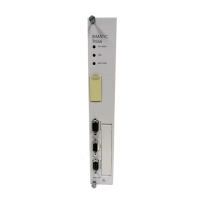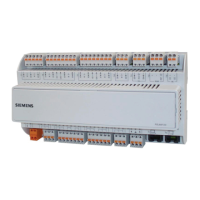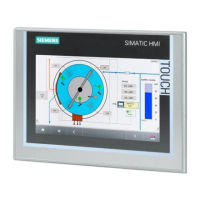Block library TeleControl ST7
5.5 Structure of user program for TD7onCPU
TIM 1531 IRC
Operating Instructions, 02/2018, C79000-G8976-C468-02
137
Following the FCs for SINAUT basic tasks, data point typicals for sending and
receiving data are called. The sequence of the individual typicals is unimportant.
The number of typicals to call and the required types depend on the amount and
type of data to be sent and received.
The following typically applies to a station:
• The following are sent:
– Binary information, such as status messages and alarms
– Analog values
– Counted values
• The following are received:
– Commands
– Setpoints, limit values, parameters
One or more FBs for the acquisition and transfer of binary information, such as
One or more FBs for the acquisition and transfer of analog values
One or more FBs for the acquisition and transfer of counted values
A requirement for the use of the FBs is that FC PulseCounter is included in a
cyclic interrupt OB, e.g. OB35. This FC is responsible for the time-driven acquisi-
tion of counted pulses in the background.
One or more FBs for receipt and output of commands.
One or more FBs for receipt and output of setpoints, limit values or parameters..
One or more FBs for the acquisition and transfer of 12 data double words with
any content.
There is no data-specific processing and change control for these typicals. The
user program is responsible for this. As an option change control can be activat-
ed that triggers a transfer with each bit change.
TD7 programs for master stations and node stations
In principle, the TD7 programs of master stations and node stations look the same as for a
station. The corresponding receive typicals are used in a master station for the send typicals
of a station.
In a node station, both send typicals and the corresponding receive typicals are used
according to the transmission direction.
In the master station it is practical to structure the OB1 program according to stations, in
other words, all data typicals belonging to the same station are called in one FC. The best
overview is provided when the number of the FC is identical to the subscriber number of the
station.
